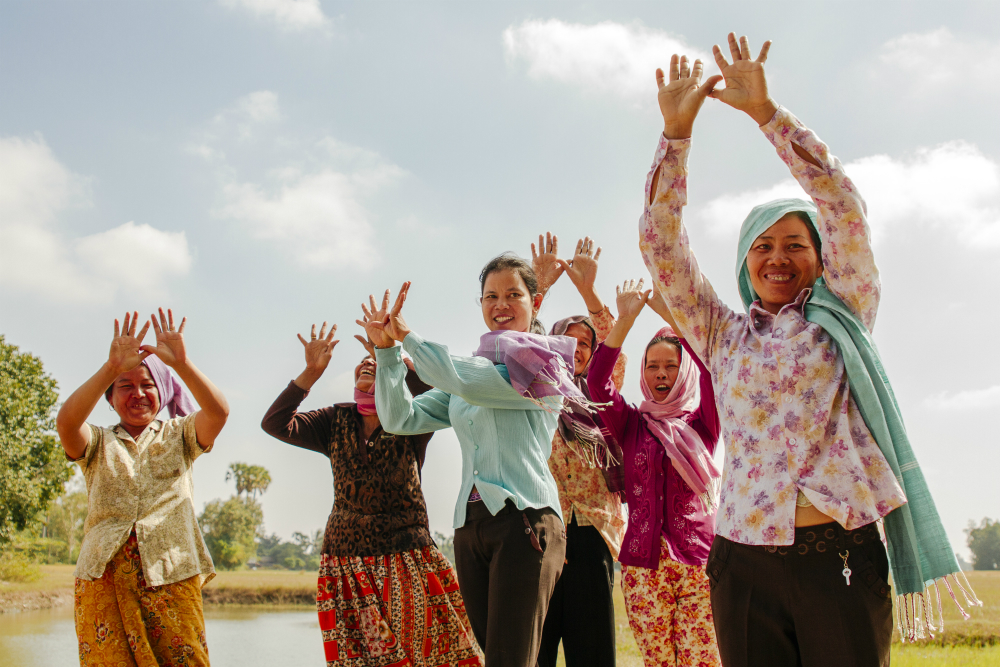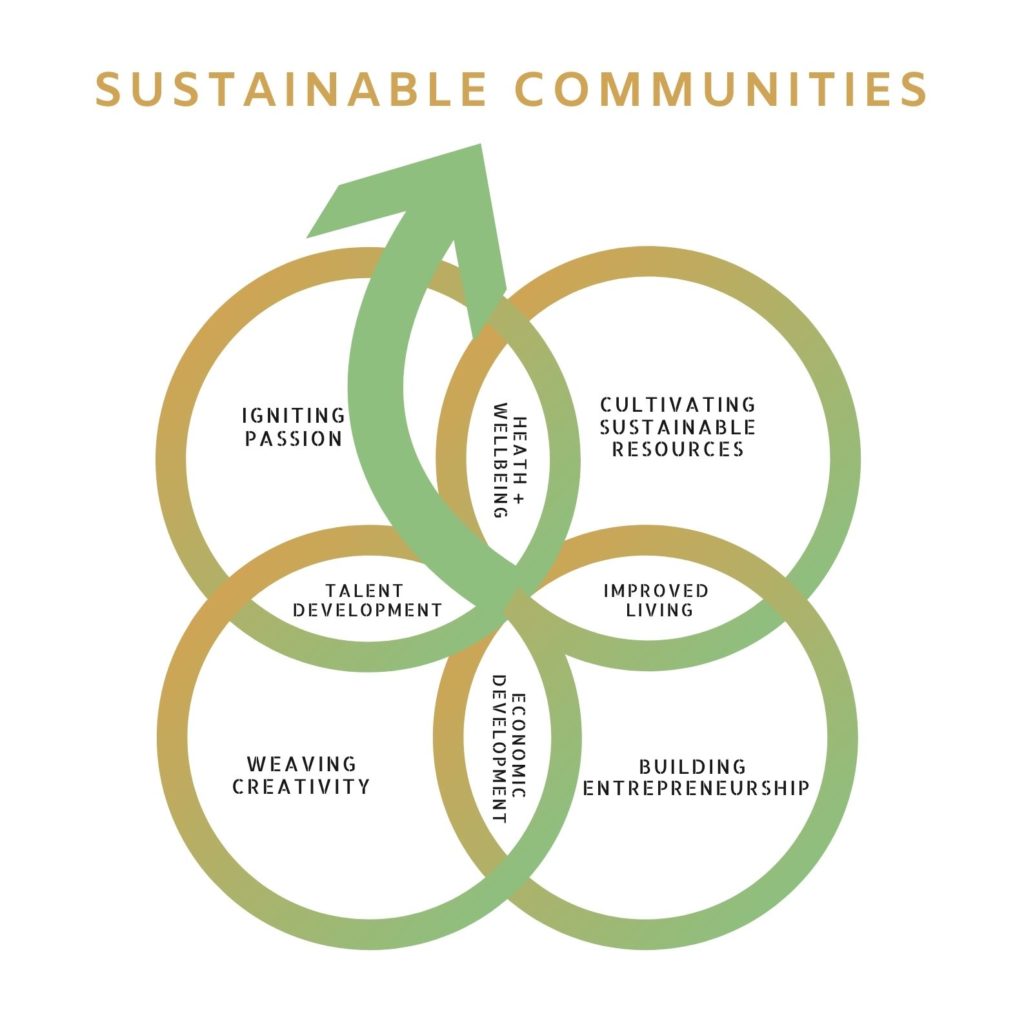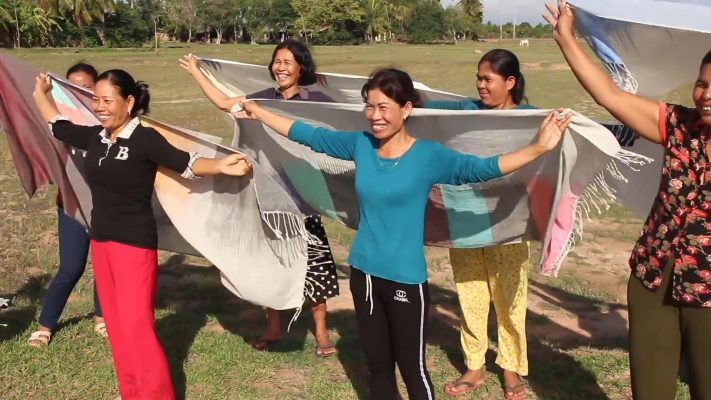
OUR WHY
Being an Indo-Canadian civil engineer by education and an entrepreneur by heart, I always had a passion for solving the most complex problems using a Systems Thinking approach. This was further inspired when I had the opportunity to meet the Noble prize laureate, Prof. Mohammad Yunus. His social business model resonated with my personal values because it was based on a very humanistic approach to development. His belief that we as humans have unlimited potential, all we need is the environment in which it can flourish was something I personally believed in.
The traditional approach to solve these challenges has been through the charity and AID model which was developed in the West after the World War was no longer effective and did not serve the people in the developing world, especially in the Asian context ( because our cultural values that are very different and are 1000s of year old).
I came face to face with this fact when I came to Cambodia first time in 2013 and it rattled my mind which led to the journey of exploring the path of true “sustainable development”. I realized how modern economic models bring prosperity to emerging market countries, but lead to growing inequalities in the distribution of wealth. I learned the following facts in Cambodia –
- 70% of the population is deprived of economic opportunities.
- 46% lack fair employment and wages.
- 50% lack access to basic services.
- 75% of children drop out in grade 9 and start to work in the factories.
Efforts to solve these problems often follow a short-term approach:
- They lack the potential and resources for high impact and sustainability.
- They fail to install local capacities to support communities at risk of social and economic exclusion over the long term. 80% of development efforts are in the cities where 20 % of Cambodians live.
Root causes for these challenges are mainly due to –
- Shortage of opportunities in rural areas
- Lack of know-how as most of the intellectuals were killed during the Khmer Rouge
- Access to the market – hence subjected to exploration by the middlemen.
THE HOW
With the help of some talented mentors and some incredible people in the villages who shared the same values, we developed a holistic model that is self-organizing, natural, agile, and simple.
Our Sustainable Community model is based on various studies and practices done by leading experts such as Schumaker, Dr. Kapra, and Prof. Yunus.
In our search for finding a sustainable solution that is self-organizing, natural, agile, and simple, we found that the Systematic Inventive Thinking (SIT) approach was best suited for developing a model that fits that criteria. The SIT approach is a comprehensive approach and has two key conditions –
The first condition, Closed World (CW), specifies that only those objects that are in the immediate problem world can be utilized in the solution. The second condition, Qualitative Change (QC), refers to eliminating the conflict that is causing the problem. And the solutions that are considered creative are the ones that eliminate a conflict in the problem (Horowitz and Maimon 1997)
Therefore, we chose to work on the Qualitative Change aspect. Our immersion in rural communities highlighted that disempowerment was one of the main root causes of poverty, which leads to a downward spiral that had many side effects as mentioned above. Therefore, in order for us to create the Qualitative Change, a holistic approach that eliminates all the conflicts that cause disempowerment was needed.

These conflicts can be divided into four key areas that outline the four key activities of our Sustainable Community Model :
1. Economic growth
2. Talent development
3. Wellbeing
4. Sustainable living conditions
In order for the community member to achieve the above four goals, we use micro-business start-ups as a vehicle for developing the following four key areas –
1. Passion – Passion for traditional skills, culture, and personal development
2. Creativity – developed by learning that is a result of the feedback loops
3. Harvesting sustainable resources – local resources that enhance the ecology
4. Entrepreneurship – as a vehicle for turning passion, creativity, and resources into profits that can be invested back into the community.
WHAT WE DO
We have been working in rural Cambodia for the talent development for facilitating rural communities of micro-entrepreneurs who grow the raw materials and convert these into high-quality value-added consumer products by using traditional skills such as Ayurveda and hand weaving. We collectively market these products in the local and international markets and 100% of the profits are then invested back into the four Community development elements outlined above.
Since 2013, we have applied the law of diffusion for spreading the idea of our model through four key activities –
1. Model village creation – we have developed a model village in Takeo Province of Cambodia where we share the local knowledge with anyone who wants to learn about entrepreneurship and the SCD model through a hands-on approach.
2. Brand creation – We have been working on creating the brand for the Cambodian handicrafts that could become known for their high quality and the unique story of the people behind these products.
3. Hybrid Value Chain (HVC) development – In order for us to connect our artisan entrepreneurs to the market, we have been collaborating with ethical brands and other influencers around the world to build a value chain that is critical for the success of our activities.
4. Creating a multiplier – We are proactively involving talented people (especially youth) by collaborating with top institutions around the world.
Our vision is to introduce this idea to as many villages around Cambodia so that the people in rural communities can find sustainable living and preserve the natural system that has thrived for thousands of years.
Please contact us for more information or to find out how you can become part of this amazing journey.

